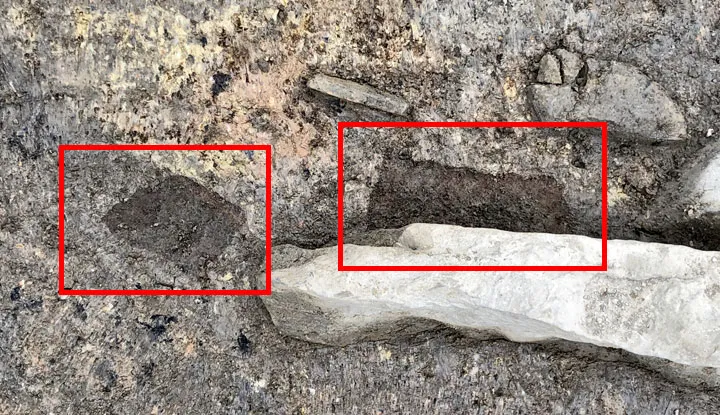5,000-Year-Old Wooden Stakes Discovered at Neolithic Site in Scotland
Excavations at Orkney’s Ness of Brodgar revealed two prehistoric pieces of timber
:focal(356x346:357x347)/https://tf-cmsv2-smithsonianmag-media.s3.amazonaws.com/filer/e1/e6/e1e62eab-1de7-4d0b-b886-eaec068a1949/post-holes.jpg)
Archaeologists at the Ness of Brodgar ceremonial center in Scotland have discovered two pieces of wood dated to the Neolithic era, reports Craig Munro for the Press and Journal.
Found in two postholes in the floor of a structure at the Orkney site, the prehistoric wooden stakes survived for 5,000 years due to a dip in the floor, which may have funneled moisture into the holes and helped preserve the material.
“The wood is not in good condition, which is hardly surprising after thousands of years in the ground,” says the excavation team in a statement.
Initially, the researchers suspected the wood was too mushy to be lifted out. On August 3, however, archaeologist Jo McKenzie managed to successfully recover one of the stakes. (McKenzie documented the process in a “dig diary” video posted online.)
Next, the team hopes to identify the type of wood present and determine if the wooden stakes were sharpened before being driven into the holes.
“[T]he smaller of the two stakes had a beautifully square base and rested on a flat stone at the bottom of the post-hole, which presumably acted as a cushion,” note the researchers in a separate statement.
The Ness of Brodgar is part of the Heart of Neolithic Orkney Unesco World Heritage site. Since 2006, excavations at the site have unearthed a large sandstone building complex, pottery, bones, artwork and stone tools. As the Guardian’s Kevin McKenna reported in 2016, the site’s builders carried its materials from different parts of the island, sometimes over several miles. This suggests that people from across the area may have used the buildings as meeting places for trade and ceremonial activities.
“I think we had always tended to depict our Neolithic ancestors as Stone Age hippies who frolicked around large stones in some herb-induced fugue,” the site’s director, Nick Card, told the Guardian. “But this settlement depicts a dynamic, skilled and creative people whose workmanship would bear scrutiny with 21st-century methods.”
In addition to the Ness of Brodgar, the World Heritage Site encompasses two stone monuments, the Ring of Brodgar and the Stones of Stenness; a burial site known as Maeshowe; and a settlement called Skara Brae. The area is known for its Grooved Ware pottery. This ceramic style, featuring a flat bottom and intricate decoration, has been found in many parts of Britain and Ireland, but the earliest known examples are from Orkney.

Per Orkneyjar, researchers think the invention of Grooved Ware, along with some of the building innovations at Orkney, may have reflected the emergence of an elite group within the Neolithic society. The large amounts of labor that went into the complicated creations appear to have benefitted some people more than others.
The new find took place in the oldest part of the Ness, which dates to around 3100 B.C., according to the Press and Journal. The structure where the wood was discovered is near the complex’s eastern entrance. Archaeologists say it may be a particularly important part of the site because it features external upright slabs called orthostats.
Excavations at Ness Brodgar have been slowed by the Covid-19 pandemic, which prevented work in 2020 and allowed only a limited number of researchers to be on site during the current season. As BBC News reports, volunteers are helping to cover the site with tarps held down by tires, as they do each year. This technique protects the site from severe weather in the fall and winter.
“The tires serve two purposes—they hold down the protective covers that envelope each trench and offer a degree of support for more fragile areas,” Sigurd Towrie of the Archaeology Institute of the Highland and Islands tells BBC News. “The site has to be covered over for its protection. Much of the stone used in the construction of the buildings back in the Neolithic laminates when exposed to the elements for any length of time.”
/https://tf-cmsv2-smithsonianmag-media.s3.amazonaws.com/accounts/headshot/Livia_lg_thumbnail.png)


/https://tf-cmsv2-smithsonianmag-media.s3.amazonaws.com/accounts/headshot/Livia_lg_thumbnail.png)